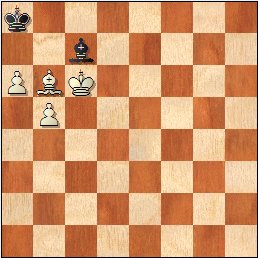Something Chess Today is calling the Swiss Championship is underway, and after 6 rounds Korchnoi and Gallagher - both Swiss - are tied for second with 4/6, half a point behind Pelletier - also Swiss - and Kosteniuk. Huh? (What's the old joke - visit Russia, before Russia visits you?) Kosteniuk is a Russian citizen: she plays there all the time, represents them in team events and is a member of their federation. So a Russian championship, sure. She can't play in the U.S. Championship - rightly - but it would at least make some sense if she did: she lives with her American husband in Miami, Florida. But what could possibly justify her playing in the Swiss Championship? Maybe a French or German-speaking reader can go to the tournament site and explain what's happening. If this really is the Swiss Championship, I know I'd be pretty upset if I had been the qualifier for the 10th spot, only to have it given away to someone who doesn't even live in my country.
Anyway, let's turn to the chess. The end of the fourth round game Korchnoi-Kurmann makes for an interesting little exercise.

White has just played 49.Be3-b6, and Black resigned. But why? If the players had light-squared bishops, or if everything was moved in a file, there would be nothing to think about. But remember the problem of the wrong-colored bishop and pawn combination; if Black can give up his bishop for the b-pawn, it's a draw. There are stalemate tricks, too. On the previous move, 49.Kxc7 would be stalemate, and there are other stalemate constructions too (e.g. White's bishop on the diagonal somewhere from h2 to a7, and then Black plays ...Bb6, when Kxb6 would be an instant draw).
Of course, it is a win, but see if you can figure out how White finishes the job against feisty defense from Black. I managed to work it out for myself against a chess engine, but it took several minutes before I was able to overcome the ring-around-the-rosies problem and put Black out of his misery.
A solution is here.